Citibank 2015 Annual Report Download - page 41
Download and view the complete annual report
Please find page 41 of the 2015 Citibank annual report below. You can navigate through the pages in the report by either clicking on the pages listed below, or by using the keyword search tool below to find specific information within the annual report.-
 1
1 -
 2
2 -
 3
3 -
 4
4 -
 5
5 -
 6
6 -
 7
7 -
 8
8 -
 9
9 -
 10
10 -
 11
11 -
 12
12 -
 13
13 -
 14
14 -
 15
15 -
 16
16 -
 17
17 -
 18
18 -
 19
19 -
 20
20 -
 21
21 -
 22
22 -
 23
23 -
 24
24 -
 25
25 -
 26
26 -
 27
27 -
 28
28 -
 29
29 -
 30
30 -
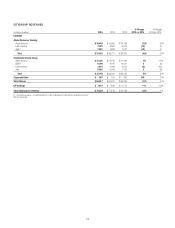 31
31 -
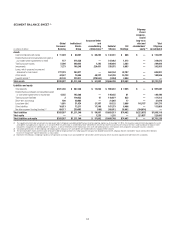 32
32 -
 33
33 -
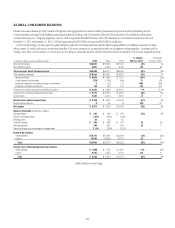 34
34 -
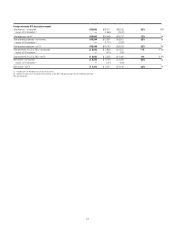 35
35 -
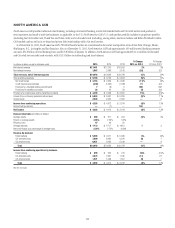 36
36 -
 37
37 -
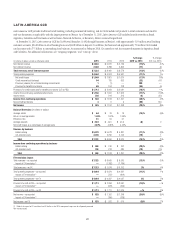 38
38 -
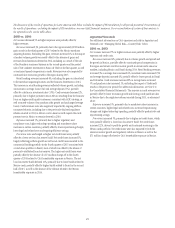 39
39 -
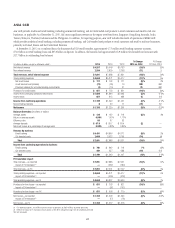 40
40 -
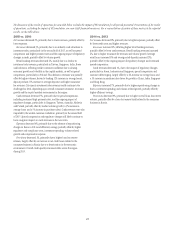 41
41 -
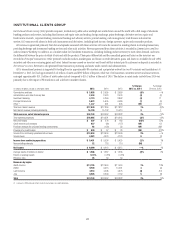 42
42 -
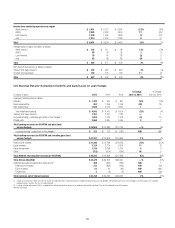 43
43 -
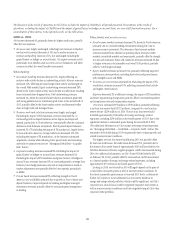 44
44 -
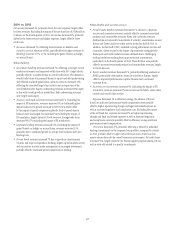 45
45 -
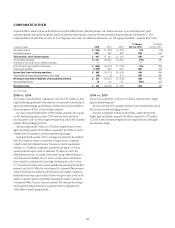 46
46 -
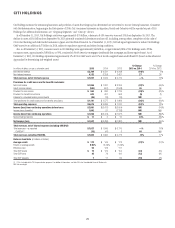 47
47 -
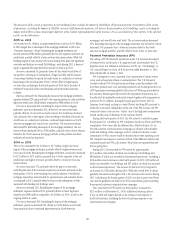 48
48 -
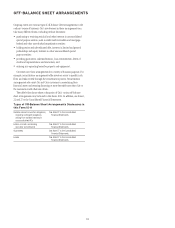 49
49 -
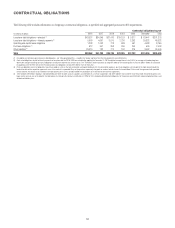 50
50 -
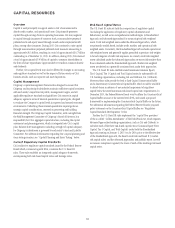 51
51 -
 52
52 -
 53
53 -
 54
54 -
 55
55 -
 56
56 -
 57
57 -
 58
58 -
 59
59 -
 60
60 -
 61
61 -
 62
62 -
 63
63 -
 64
64 -
 65
65 -
 66
66 -
 67
67 -
 68
68 -
 69
69 -
 70
70 -
 71
71 -
 72
72 -
 73
73 -
 74
74 -
 75
75 -
 76
76 -
 77
77 -
 78
78 -
 79
79 -
 80
80 -
 81
81 -
 82
82 -
 83
83 -
 84
84 -
 85
85 -
 86
86 -
 87
87 -
 88
88 -
 89
89 -
 90
90 -
 91
91 -
 92
92 -
 93
93 -
 94
94 -
 95
95 -
 96
96 -
 97
97 -
 98
98 -
 99
99 -
 100
100 -
 101
101 -
 102
102 -
 103
103 -
 104
104 -
 105
105 -
 106
106 -
 107
107 -
 108
108 -
 109
109 -
 110
110 -
 111
111 -
 112
112 -
 113
113 -
 114
114 -
 115
115 -
 116
116 -
 117
117 -
 118
118 -
 119
119 -
 120
120 -
 121
121 -
 122
122 -
 123
123 -
 124
124 -
 125
125 -
 126
126 -
 127
127 -
 128
128 -
 129
129 -
 130
130 -
 131
131 -
 132
132 -
 133
133 -
 134
134 -
 135
135 -
 136
136 -
 137
137 -
 138
138 -
 139
139 -
 140
140 -
 141
141 -
 142
142 -
 143
143 -
 144
144 -
 145
145 -
 146
146 -
 147
147 -
 148
148 -
 149
149 -
 150
150 -
 151
151 -
 152
152 -
 153
153 -
 154
154 -
 155
155 -
 156
156 -
 157
157 -
 158
158 -
 159
159 -
 160
160 -
 161
161 -
 162
162 -
 163
163 -
 164
164 -
 165
165 -
 166
166 -
 167
167 -
 168
168 -
 169
169 -
 170
170 -
 171
171 -
 172
172 -
 173
173 -
 174
174 -
 175
175 -
 176
176 -
 177
177 -
 178
178 -
 179
179 -
 180
180 -
 181
181 -
 182
182 -
 183
183 -
 184
184 -
 185
185 -
 186
186 -
 187
187 -
 188
188 -
 189
189 -
 190
190 -
 191
191 -
 192
192 -
 193
193 -
 194
194 -
 195
195 -
 196
196 -
 197
197 -
 198
198 -
 199
199 -
 200
200 -
 201
201 -
 202
202 -
 203
203 -
 204
204 -
 205
205 -
 206
206 -
 207
207 -
 208
208 -
 209
209 -
 210
210 -
 211
211 -
 212
212 -
 213
213 -
 214
214 -
 215
215 -
 216
216 -
 217
217 -
 218
218 -
 219
219 -
 220
220 -
 221
221 -
 222
222 -
 223
223 -
 224
224 -
 225
225 -
 226
226 -
 227
227 -
 228
228 -
 229
229 -
 230
230 -
 231
231 -
 232
232 -
 233
233 -
 234
234 -
 235
235 -
 236
236 -
 237
237 -
 238
238 -
 239
239 -
 240
240 -
 241
241 -
 242
242 -
 243
243 -
 244
244 -
 245
245 -
 246
246 -
 247
247 -
 248
248 -
 249
249 -
 250
250 -
 251
251 -
 252
252 -
 253
253 -
 254
254 -
 255
255 -
 256
256 -
 257
257 -
 258
258 -
 259
259 -
 260
260 -
 261
261 -
 262
262 -
 263
263 -
 264
264 -
 265
265 -
 266
266 -
 267
267 -
 268
268 -
 269
269 -
 270
270 -
 271
271 -
 272
272 -
 273
273 -
 274
274 -
 275
275 -
 276
276 -
 277
277 -
 278
278 -
 279
279 -
 280
280 -
 281
281 -
 282
282 -
 283
283 -
 284
284 -
 285
285 -
 286
286 -
 287
287 -
 288
288 -
 289
289 -
 290
290 -
 291
291 -
 292
292 -
 293
293 -
 294
294 -
 295
295 -
 296
296 -
 297
297 -
 298
298 -
 299
299 -
 300
300 -
 301
301 -
 302
302 -
 303
303 -
 304
304 -
 305
305 -
 306
306 -
 307
307 -
 308
308 -
 309
309 -
 310
310 -
 311
311 -
 312
312 -
 313
313 -
 314
314 -
 315
315 -
 316
316 -
 317
317 -
 318
318 -
 319
319 -
 320
320 -
 321
321 -
 322
322 -
 323
323 -
 324
324 -
 325
325 -
 326
326 -
 327
327 -
 328
328 -
 329
329 -
 330
330 -
 331
331 -
 332
332
 |
 |
23
The discussion of the results of operations for Asia GCB below excludes the impact of FX translation for all periods presented. Presentations of the results
of operations, excluding the impact of FX translation, are non-GAAP financial measures. For a reconciliation of certain of these metrics to the reported
results, see the table above.
2015 vs. 2014
Net income decreased 2%, primarily due to lower revenues, partially offset by
lower expenses.
Revenues decreased 3%, primarily due to an industry-wide slowdown in
investment sales, particularly in the second half of 2015, as well as spread
compression and higher payment rates and the ongoing impact of regulatory
changes in cards, partially offset by volume growth.
Retail banking revenues decreased 2%, mainly due to a decline in
investment sales revenue, particularly in Taiwan, Singapore, India, Korea
and Indonesia, reflecting weaker customer confidence due to slowing
economic growth and volatility in the capital markets, as well as spread
compression, particularly in Poland. This decline in revenues was partially
offset by higher volumes, driven by lending (2% increase in average loans),
deposit products (5% increase in average deposits) and higher insurance
fee revenues. Citi expects investment sales revenues could continue to be
challenged in 2016, depending upon overall consumer sentiment, economic
growth and the capital markets environment in the region.
Cards revenues decreased 5%, primarily due to spread compression,
including continued high payment rates, and the ongoing impact of
regulatory changes, particularly in Singapore, Taiwan, Australia, Malaysia
and Poland, partially offset by modest volume growth (a 3% increase in
average loans and a 5% increase in purchase sales). Cards revenues were also
impacted by the weaker customer confidence, primarily in the second half
of 2015. Spread compression and regulatory changes will likely continue to
have a negative impact on cards revenues in the near term.
Expenses decreased 4%, primarily due to the absence of repositioning
charges in Korea in 2014 and efficiency savings, partially offset by higher
regulatory and compliance costs, investment spending, volume-related
growth and compensation expense.
Provisions decreased 1%, primarily due to higher loan loss reserve
releases, largely offset by an increase in net credit losses related to the
consumer business in Russia due to a deterioration in the economic
environment. Overall credit quality remained stable across the region
during 2015.
2014 vs. 2013
Net income decreased 8%, primarily due to higher expenses, partially offset
by lower credit costs and higher revenues.
Revenues increased 2%, reflecting higher retail banking revenues,
partially offset by lower cards revenues. Retail banking revenues increased
4%, due to higher insurance fee revenues and volume growth (average
retail loans increased 8% and average retail deposits increased 2%),
partially offset by the ongoing impact of regulatory changes and continued
spread compression.
Cards revenues decreased 1%, due to the impact of regulatory changes,
particularly in Korea, Indonesia and Singapore, spread compression and
customer deleveraging, largely offset by a 2% increase in average loans and
a 3% increase in purchase sales driven by growth in China, India, Singapore
and Hong Kong.
Expenses increased 7%, primarily due to higher repositioning charges in
Korea, investment spending and volume-related growth, partially offset by
higher efficiency savings.
Provisions decreased 9%, primarily due to higher overall loan loss reserve
releases, partially offset by a loan loss reserve build related to the consumer
business in Russia.
